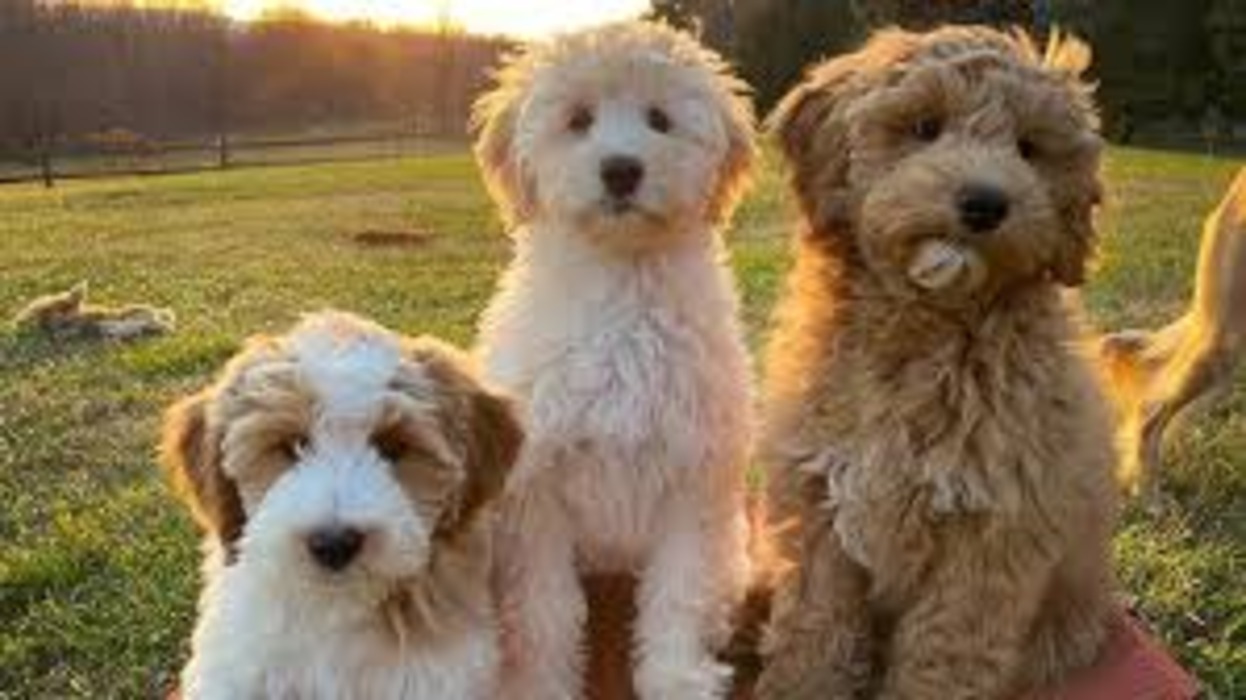Goldendoodle F1B vs F2B are one of the most popular designer dog breeds, loved for their friendly demeanor, intelligence, and low-shedding coats. However, the world of Goldendoodles is rich with variety, leading to the development of several generations of this breed. Two of the most discussed generations are the F1B and F2B Goldendoodles. Understanding the differences between these two can be crucial in choosing the right dog for your lifestyle and preferences.Goldendoodle F1B vs F2B
What Is a Goldendoodle F1B vs F2B?
Before diving into the specifics of F1B and F2B Goldendoodles, it’s important to understand what a Goldendoodle is. A Goldendoodle is a crossbreed between a Golden Retriever and a Poodle. This hybrid aims to combine the best traits of both breeds—the friendly and loyal nature of the Golden Retriever with the intelligence and hypoallergenic coat of the Poodle. Goldendoodles are known for being great family pets, highly trainable, and excellent companions for those with allergies due to their low-shedding coats.Goldendoodle F1B vs F2B
Understanding Goldendoodle Generations
Goldendoodles come in various generations, denoted by terms like F1, F1B, F2, F2B, etc. These terms refer to the breeding history and genetic composition of the dog.Goldendoodle F1B vs F2B
- F1 Goldendoodle: This is a first-generation Goldendoodle, resulting from a direct cross between a purebred Golden Retriever and a purebred Poodle. F1 Goldendoodles are 50% Golden Retriever and 50% Poodle.
- F1B Goldendoodle: The “B” in F1B stands for “backcross.” An F1B Goldendoodle is the result of breeding an F1 Goldendoodle with a purebred Poodle. This backcrossing typically results in a dog that is 75% Poodle and 25% Golden Retriever, which often enhances traits like a curly, low-shedding coat.Goldendoodle F1B vs F2B
- F2 Goldendoodle: This is a second-generation Goldendoodle, created by breeding two F1 Goldendoodles. F2 Goldendoodles still have the 50/50 genetic split between the Golden Retriever and the Poodle.Goldendoodle F1B vs F2B
- F2B Goldendoodle: An F2B Goldendoodle is produced by breeding an F1 Goldendoodle with an F1B Goldendoodle. This results in a dog that is about 62.5% Poodle and 37.5% Golden Retriever. The slightly higher percentage of Poodle often enhances desirable traits like coat texture and reduced shedding.
Coat Type and Shedding
One of the primary reasons people choose a Goldendoodle is for their coat, which is typically low-shedding and hypoallergenic. However, the type of coat and the level of shedding can vary significantly between generations.Goldendoodle F1B vs F2B
- F1B Goldendoodle Coat: With a genetic makeup that is 75% Poodle, F1B Goldendoodles often have a curlier coat, which is more similar to that of a purebred Poodle. This type of coat is less likely to shed and is more hypoallergenic, making F1B Goldendoodles a preferred choice for people with allergies. The curliness of the coat also requires regular grooming to prevent matting and tangles.
- F2B Goldendoodle Coat: The coat of an F2B Goldendoodle can vary, but it typically has a mix of curly and wavy textures. Since F2B Goldendoodles are about 62.5% Poodle, they tend to have a coat that is still low-shedding but might be slightly less curly than an F1B’s. This can result in a coat that is easier to manage while still being relatively hypoallergenic.Goldendoodle F1B vs F2B
Temperament and Personality
Goldendoodles are known for their friendly, affectionate, and intelligent nature, regardless of their generation. However, slight differences in temperament can emerge due to the genetic mix.Goldendoodle F1B vs F2B
- F1B Goldendoodle Temperament: Due to their higher Poodle percentage, F1B Goldendoodles may display a bit more independence and a slightly higher level of intelligence, traits commonly associated with Poodles. They are quick learners and often excel in obedience training and agility courses. Their temperament is still very friendly and sociable, making them great companions for families, singles, and seniors alike.
- F2B Goldendoodle Temperament: F2B Goldendoodles, with their closer balance between Poodle and Golden Retriever traits, may exhibit a blend of the Golden Retriever’s laid-back, loyal personality and the Poodle’s intelligence and alertness. These dogs tend to be very affectionate and enjoy being around people, making them excellent family pets. Their temperament is usually quite balanced, making them adaptable to different living situations.
Health Considerations
Like all dog breeds, Goldendoodles are susceptible to certain health issues. The specific health risks can vary depending on the generation due to the genetic diversity involved in breeding.Goldendoodle F1B vs F2B
- F1B Goldendoodle Health: The backcrossing to a Poodle in F1B Goldendoodles often results in a lower risk of inheriting genetic disorders common in purebred dogs. However, they may still be prone to health issues such as hip dysplasia, progressive retinal atrophy, and allergies. Regular vet check-ups and a healthy lifestyle can help mitigate these risks.
- F2B Goldendoodle Health: F2B Goldendoodles also benefit from hybrid vigor, which can reduce the likelihood of inheriting genetic conditions. However, because they have a slightly higher Golden Retriever percentage, they may be more prone to issues like hip dysplasia and certain heart conditions. Regular exercise, a balanced diet, and routine vet visits are essential to maintaining their health.
Size and Lifespan
Goldendoodles come in various sizes, typically determined by the size of the Poodle parent (Standard, Miniature, or Toy). Both F1B and F2B Goldendoodles can range from small to large, depending on their lineage.Goldendoodle F1B vs F2B
- F1B Goldendoodle Size: The size of an F1B Goldendoodle largely depends on the size of the Poodle parent used in the backcross. Standard F1B Goldendoodles can weigh between 50 to 90 pounds, while Miniature F1Bs typically weigh between 15 to 35 pounds. Their lifespan generally ranges from 12 to 15 years, depending on their size and overall health.
- F2B Goldendoodle Size: F2B Goldendoodles can also vary widely in size. The balance between Poodle and Golden Retriever genes can result in a broad range of sizes, but they typically fall within the same ranges as F1Bs. Their lifespan is also comparable, generally between 12 to 15 years.
Choosing Between F1B and F2B Goldendoodles
When deciding between an F1B and an F2B Goldendoodle, several factors should be considered:
- Allergies: If you or a family member has allergies, an F1B Goldendoodle might be a better choice due to their higher Poodle percentage and more hypoallergenic coat.
- Coat Preference: If you prefer a curlier, more Poodle-like coat, the F1B is likely the better option. If you want a mix of wavy and curly, the F2B might suit your preference.
- Temperament: Both generations are friendly and intelligent, but if you’re looking for a slightly more relaxed temperament, an F2B might be the better fit due to its Golden Retriever influence.
- Health Considerations: Both generations are generally healthy, but regular vet care is essential. Consider the genetic history of the parents and any potential health screenings done by the breeder.
Conclusion
Whether you choose an F1B or F2B Goldendoodle, both generations offer the wonderful traits that have made Goldendoodles so beloved—intelligence, affection, and a low-shedding coat. Your choice will ultimately depend on your personal preferences, lifestyle, and any specific needs such as allergy considerations. By understanding the differences between these two generations, you can make an informed decision that will lead to a happy, healthy life with your new furry friend.Goldendoodle F1B vs F2B











